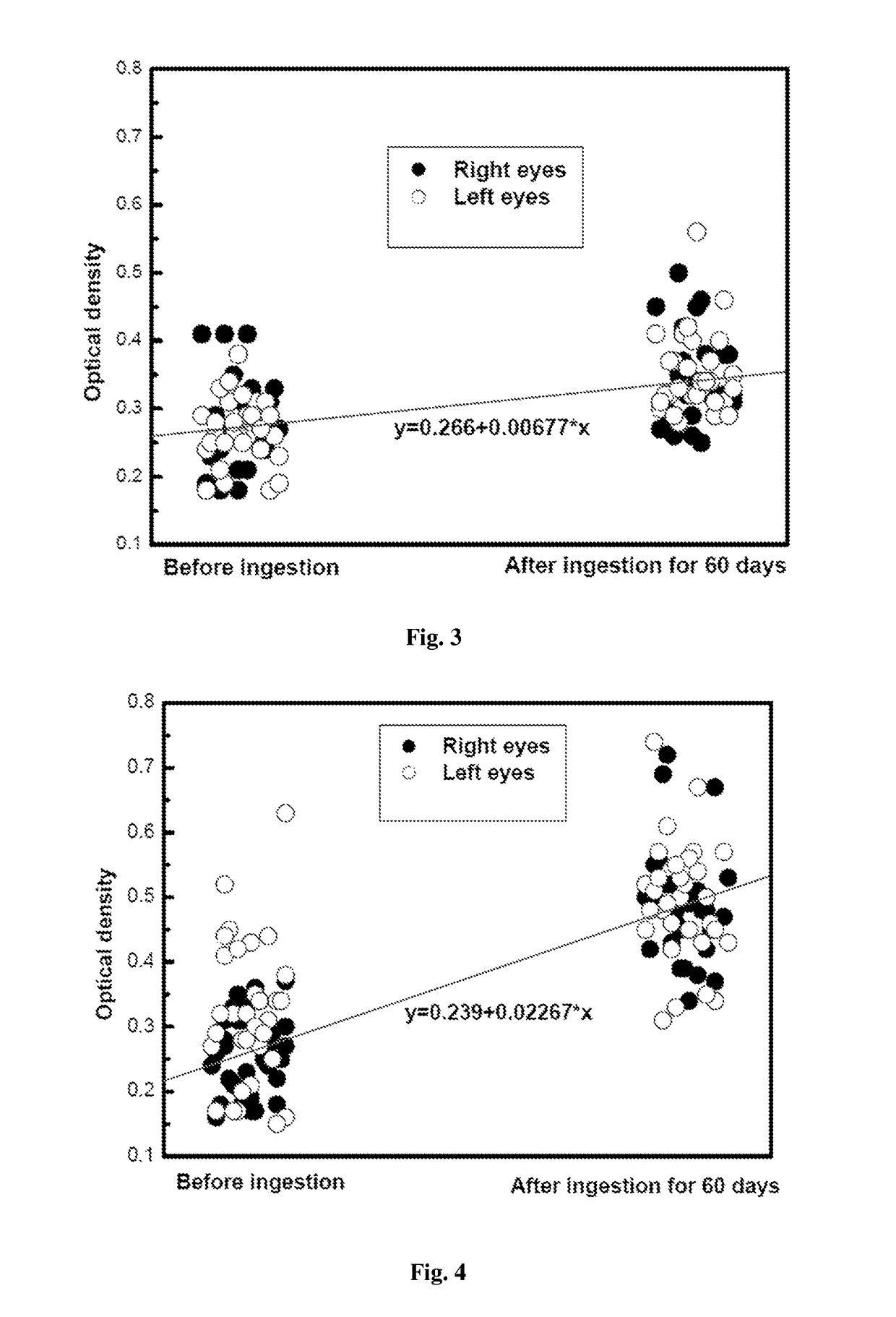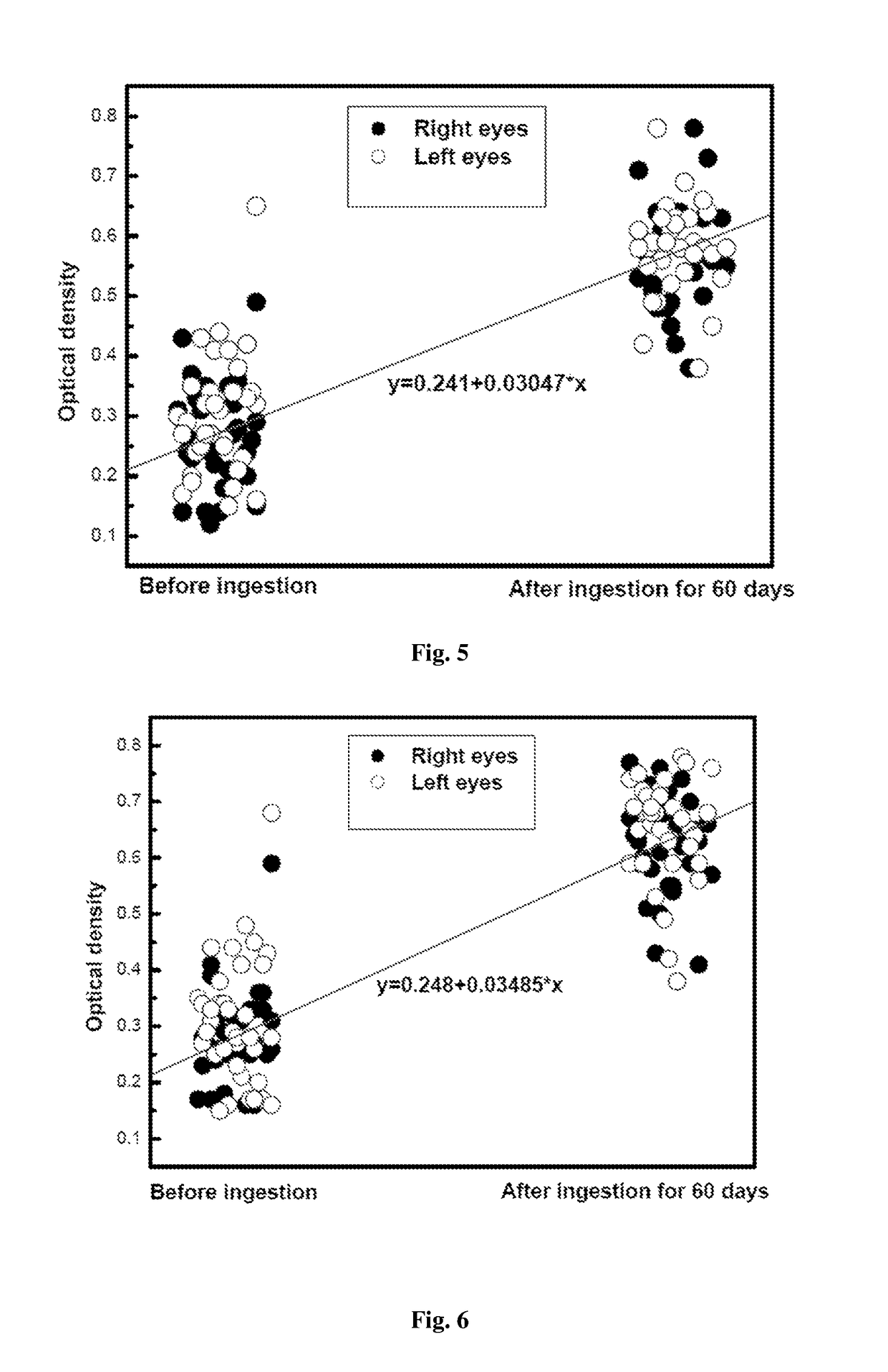Composition for improving macular pigment density and preventing or treating age-related macular degeneration
a technology of macular pigment and optical density, applied in the pharmaceutical industry, can solve the problems of central vision loss, delay the occurrence and formation of amd, and make blindness serious, and achieve the effects of reducing the occurrence of amd, and increasing the physiological activity of zeaxanthin
- Summary
- Abstract
- Description
- Claims
- Application Information
AI Technical Summary
Benefits of technology
Problems solved by technology
Method used
Image
Examples
example 1
[0041]Human Beings Test of Lutein, Zeaxanthin, EGCG for Treating or Preventing Age-Related Macular Degeneration (AMD)
[0042]208 patients (males 88, females 120) , being more than 55 years old and diagnosed with AMD were selected for this test, according to voluntary principles, with the exception of the following subjects: those who have certain ophthalmic disease that may affect the testing results; those who have administered relevant drugs, health products or applied other treatments for long or short time affecting determination for results; those who do not confirm to inclusion criteria, and do not feed tested drug according to requirement, or have incomplete information affecting efficacy or safe-determination.
[0043]Control groups and intervention groups were established in tests, wherein 31 subjects were randomly selected to administer placebo in a control group. Intervention groups were further divided into five groups (I, II, III, IV, V). Subjects in each of intervention gro...
example 2
A Soft Capsule Consisting of the Following Components
[0053]
ComponentAmount (mg / grain)lutein2.0(3R,3′S, meso)- zeaxanthin4.0EGCG (more than 95%) *20.0Beta- carotene6.0d-alpha tocopheryl acetate100.0polyunsaturated fatty acids DHA20.0safflower oil118.0summation250.0* EGCG is purchased from RongKai Plant Extracts Co., LTD.Usage: twice per day, a grain once.
example 3
A Hard Capsule Consisting of the Following Components
[0054]
ComponentAmount (mg / grain)lutein6.0(3R,3′R)- zeaxanthin6.0EGCG (more than 80%)*10.0retinol acetate power 500,000 IU12.0dl-alpha tocopheryl acetate powder 50%20.0ascorbic acid power100.0polyunsaturated fatty acids EPA power15.0copper15.0zinc40.0L-selenomethionine0.15lecithin75.85summation300.0*EGCG is purchased from RongKai Plant Extracts Co., LTDUsage: once per day, a grain once.
PUM
| Property | Measurement | Unit |
|---|---|---|
| absorption wavelength | aaaaa | aaaaa |
| weight ratio | aaaaa | aaaaa |
| weight | aaaaa | aaaaa |
Abstract
Description
Claims
Application Information
 Login to View More
Login to View More - R&D
- Intellectual Property
- Life Sciences
- Materials
- Tech Scout
- Unparalleled Data Quality
- Higher Quality Content
- 60% Fewer Hallucinations
Browse by: Latest US Patents, China's latest patents, Technical Efficacy Thesaurus, Application Domain, Technology Topic, Popular Technical Reports.
© 2025 PatSnap. All rights reserved.Legal|Privacy policy|Modern Slavery Act Transparency Statement|Sitemap|About US| Contact US: help@patsnap.com



